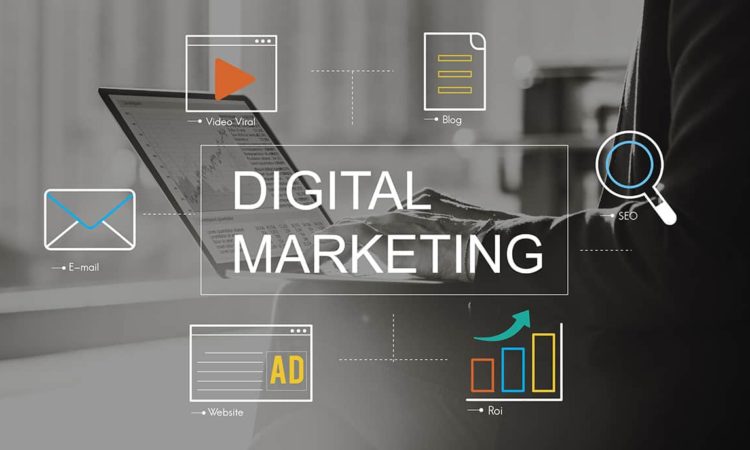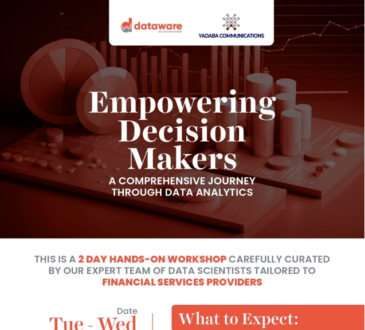
“In the world of Internet Customer Service, it’s important to remember your competitor is only one mouse click away.” –Doug Warner, Internet Expert
Introduction
Digital marketing is a rapidly evolving field encompassing a broad range of tactics and strategies to promote products or services through online channels. With the widespread use of the internet and social media platforms, digital marketing has become essential to any organisation’s marketing mix. Digital marketing strategies involve a variety of channels, including search engines, social media platforms, email marketing, content marketing, and display advertising, among others. Each channel has its strengths and weaknesses, and a successful digital marketing strategy uses a combination of these channels to maximise reach, engagement, and conversions.
- Amplify data analytics
The institution probably has Google Analytics. You can also be bewildered as you look at the data, struggling to understand it. How should you use the data? What are the most suitable ways to leverage it? You’re not alone because, with the correct data, you can help answer CEO and CFO questions about the ROI of your marketing efforts. Google Analytics won’t tell you much about it “out of the box,” but it can be a great resource if you know how to use raw data. Here are some ways to optimise your analytical intelligence:
I. Google Tag Manager – Adding custom analytics code to the site can be a cumbersome effort involving web developers, and adding too much tracking code can slow down the site’s performance. Instead, creating a Google Tag Manager account and linking it to your existing site analytics account is necessary. Once it’s up and running, someone can place all of your tracking code within that account, and you can then set up goals and dashboards to see the data’s performance.
II. Third-Party Tracking – Knowing visitors are clicking on Apply Now is an excellent start. Knowing that they submitted a loan application is a significant victory. Adding tracking code to your third-party vendors’ sites will allow you to connect the dots between your marketing efforts and provide the knowledge you need to answer that persistent ROI question. You should contact each of your vendors to find out if they allow for tracking codes on their sites. Then, you will want to work with a vendor who understands custom analytics so that you can be positive that everything is running correctly and that you have the dashboards you need in Google Analytics to understand the data.
- Focus on Conversion Rate Optimization
It means increasing the percentage of visitors who take the desired action on any webpage. You’re putting a lot of time, effort and money into marketing tactics, and you need to understand what’s working well and what’s not. Somebody can do this in any of these ways:
- Landing Pages – A landing page is a dedicated page that explicitly supports a specific desired action. It strips out all unnecessary elements so the visitor focuses entirely on your desired conversion. Every bank should have at least one landing page template for its website.
- Usability Testing – Website redesigns are the perfect time to implement usability testing, but you can also implement usability testing on your current site or a key campaign landing page. Usability testing allows you to confirm assumptions and fix items before it could cost you conversions.
- Integrate the institution`s marketing.
With multiple chefs in the kitchen, having a discrete message or single-channel campaign is easy. The problem is that audiences live in surround-sound environments where the offline and online worlds constantly collide, and brand awareness is often fragile. It is better to do less but integrate your marketing tactics than spread and confuse consumers.
It can carry it out via:
- Multichannel campaigns – Review all your channels when you have promotions. If auto loans are a priority during this time, plan backwards for success. Strategise your landing pages, map out campaign tactics and define your success metrics. Relying on organic SEO and paid search, ATM advertising, as well as social media and email marketing, your campaign must be integrated, consistent, and memorable.
- Utilise the strengths of each platform – Integrating your marketing efforts means doing different things across all platforms. Instead, play to the strengths of each platform while you unify your message for more effectiveness and brand continuity.
Conclusion
Banks and financial institutions must invest in digitalisation to exorcise the ghost of legacy platforms akin to traditional banking. Digital marketing strategies will help keep clients and customers informed, engaged, happy and loyal. Eventually, this will boost their confidence in transacting with the institution.
Invest resources in customer service, advanced analytics, mobile marketing, conversion rates, and in-app marketing to increase ROI.
Digitalisation is the future of banking, and the future is now.
References
https://www.wakefly.com/blog/5-most-effective-digital-marketing-strategies-for-banks/
https://thefinancialbrand.com/63705/17-digital-marketing-tips-banks-credit-unions/
About the Writer






